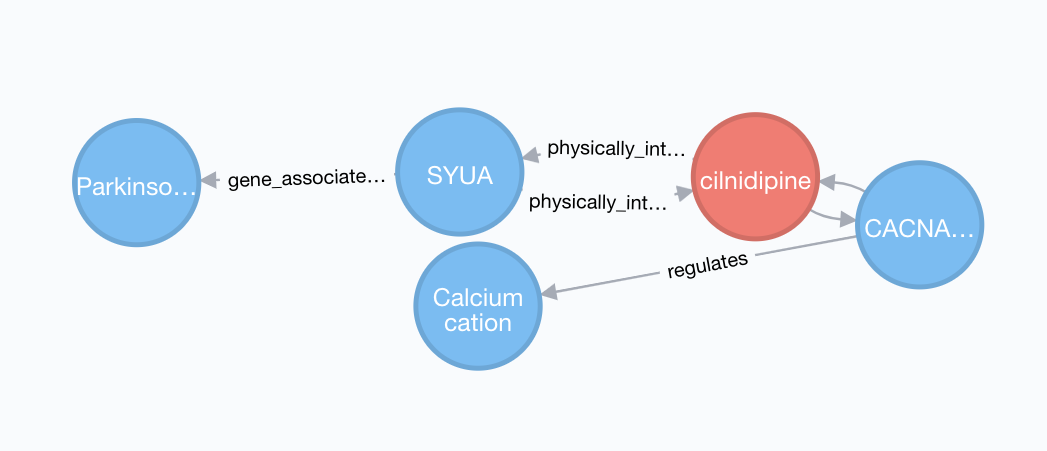TRANSLATOR TIDBIT 02
Can Translator be used to repurpose known drugs to treat symptoms of Parkinson’s disease?
If you have questions about Tidbits, click here to contact us!

I want to know which...
Parkinson's disease (PD) is a neurodegenerative disorder that affects predominantly dopamine-producing neurons in a specific area of the brain called the “substantia nigra.” Symptoms generally develop slowly over the years and include the following:
Many drug treatments are currently known, including:
Could Translator help physicians recognize specific drugs that target protein variants linked with Parkinson’s Disease to find potential new treatment options to be investigated, without creating undue burden on their time?

Translator created a ranked list using connections found by linking data sources using Translator’s reasoning tools. The novel drugs identified were reviewed by researchers in the context of PD.
Among these results, a novel association between PD and the drug cilnidipine was discovered, connected through the action of alpha-synuclein (SYUA), a protein known to be important in presynaptic signaling. Cilnidipine is a dihydropyridine L- and N-type calcium-channel blocker, which is used as an antihypertension agent in Japan, China, India, Korea and some European countries.
Interestingly, a retrospective clinical records study suggests that the use of similar calcium channel blockers may be protective against PD; researchers speculate that dihydropyridine use may relieve chronic oxidative stress on dopaminergic neurons. This connection between PD and cilnidipine represents a promising new direction for preclinical research into the disease.
Identifying drugs that can be repurposed to treat complex disorders
Translator was used to find novel uses for drugs approved for other uses that may warrant further study as treatments for the symptoms of PD.
Mining across multiple disparate datasets
Translator found connections between information in several databases that have very different data formats and can be difficult to integrate.

The ranked list of results that returned an association between PD and cilnidipine through the SYUA protein was generated by finding all of the proteins connected to the disease, then all of the drugs connected to those proteins, and sorting the resulting drug set by a measure of how many proteins are connected to both the drug and PD, using a Jaccard index. This results in drugs with many protein targets that are not associated with PD being given less weight, while drugs that have very few specific targets that are relevant to PD are given more weight.
References
https://www.ncbi.nlm.nih.gov/pmc/articles/PMC2917467/
https://en.wikipedia.org/wiki/Cilnidipine
https://pharos.ncats.io/search?q=%22cilnidipine%22